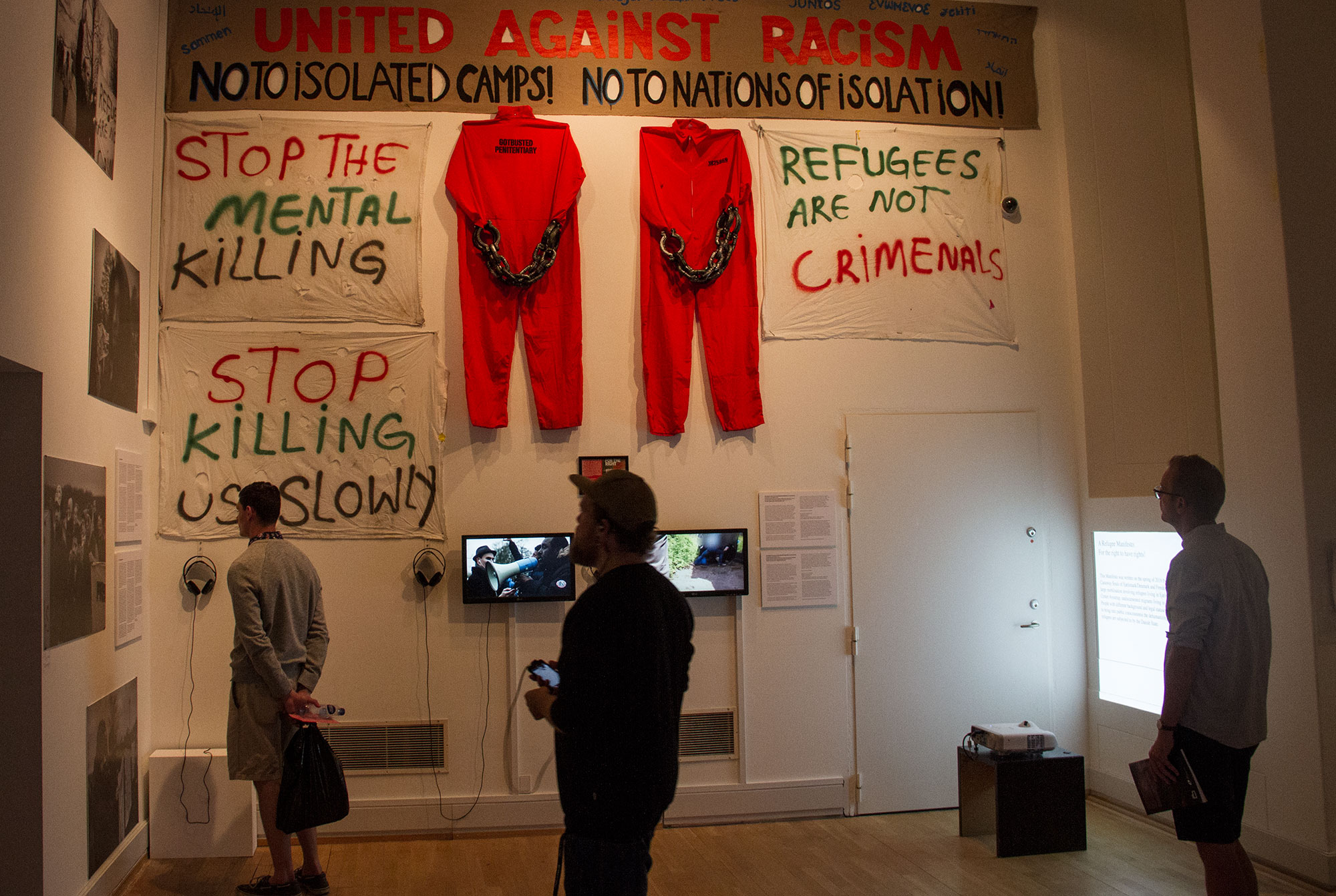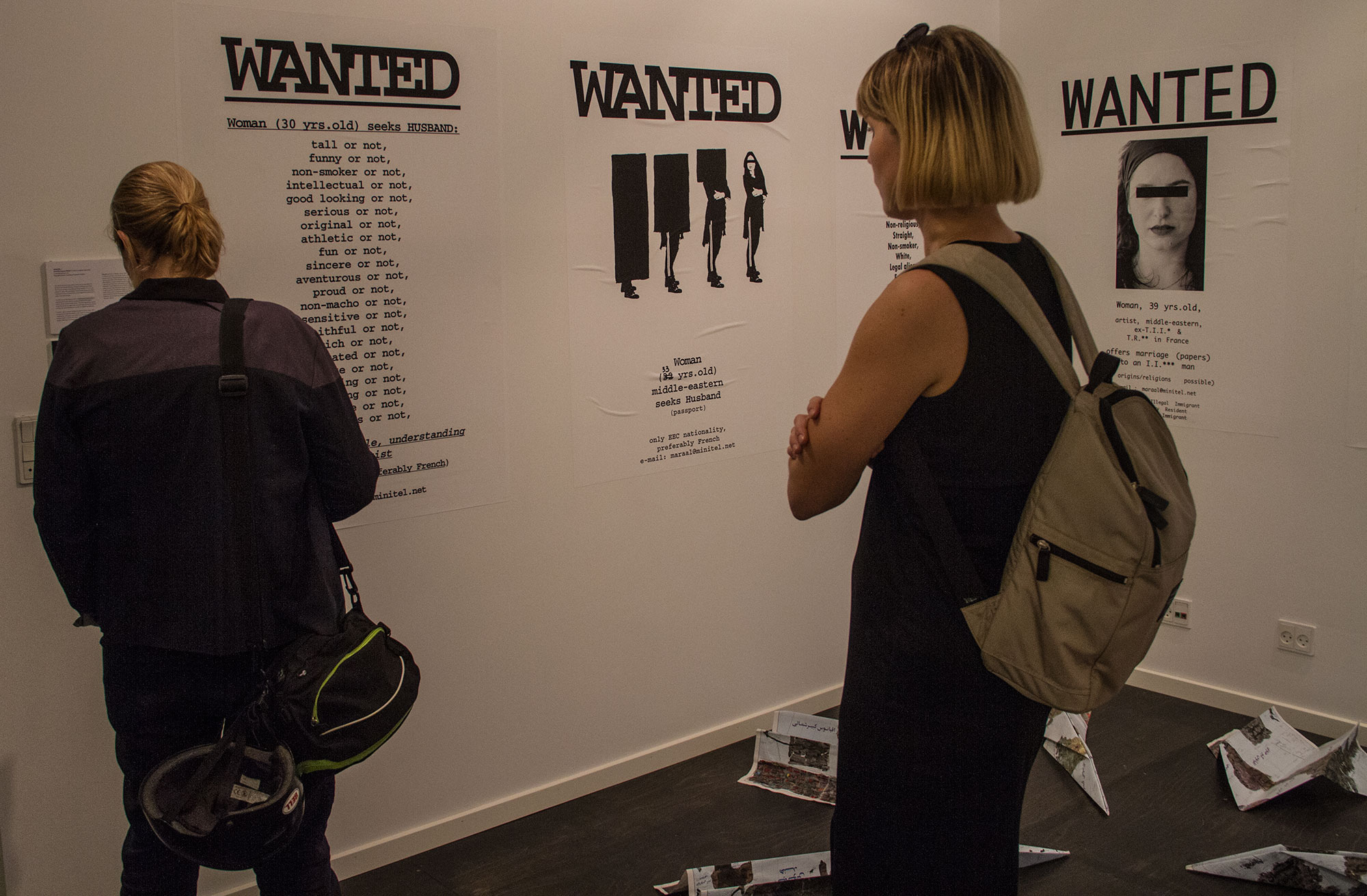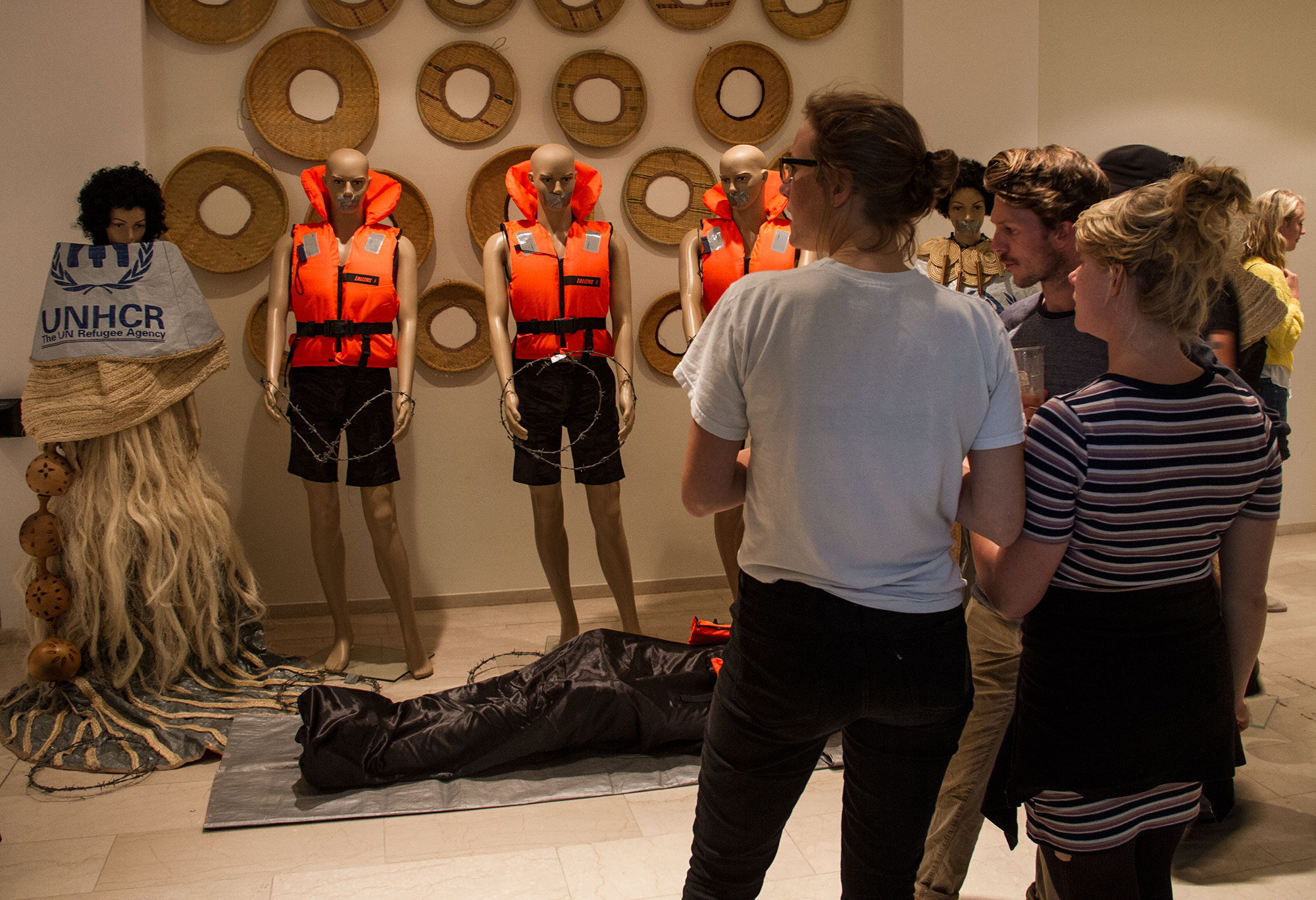The right of blood

A pregnant Peruvian, Daniela Ortiz, enters the gathering room; she enters the room tethered to another human life. A blood transmission tube from a vein in her right arm connects to a vein in the left arm of the man accompanying her, a Spaniard, Xose Quiroga.
Ortiz sits before the audience and begins her performance: ″The daughters and sons of the migrant can be catalogued automatically as illegal immigrants by the racist and colonial laws ... My blood and the blood of my baby are not entitled for having the [Spanish] nationality. My blood and the blood of my baby are rejected by the Spanish and the European states,″ she continues, while her ′Peruvian blood′ mixes with Quiroga′s ′Spanish blood′.
Ortiz presented her performance at the opening of the exhibition Deportation Regime, in the capital city of Denmark, a country infamous for its anti-immigration laws. The exhibition was hosted by CAMP, an art gallery in Copenhagen that describes itself as a exhibition venue ″for art discussing questions of displacement, migration, immigration and asylum.″
Inherited immigrant status
For Ortiz, who has performed and created artwork about immigration and deportation for five years, this exhibition was an opportunity to raise awareness of the antiquated, 19th century rule, ″right of blood″, which is still in effect in most countries across the world.
″Nationality is not the only thing that our children inherit from us, our status as an immigrant also passes on to them,″ Ortiz points out. ″If parents are considered illegal immigrants in Europe, then their children will also become illegal citizens, regardless of their birthplace.″
In Ortiz′s opinion, concepts such as freedom of movement, globalisation and the labour market are notions of modern colonialism.

″These are laws established by the European states for their own benefit,″ she explains. ″Europeans are the only ones benefiting from these laws and agreements. They can move freely, enjoy borderless trade and have access to greater work opportunities.″
″For the people from the old colonies, like us, the only opportunity presented to us is to be a cheap labour force, or to take the manual work that most Europeans don′t want to take.″
The Peruvian artist first arrived in Europe in 2007 and lives in Spain with a temporary residency permit. To her, even the integration process and the authorities′ framework for that process, is deeply rooted in colonial rules.
″They look at us as if we don′t know how to live and behave,″ she observes. ″In order to become their nationality, they first check to see if we know how to behave. If we pass the test, then they let us stay. This is the same mind-set that allows Western countries to attack Iraq and Afghanistan with the aim of bringing them democracy.″
In addition to Ortiz, artists from Iran, Cambodia and the United States display their artwork, which is based on the themes of immigration and deportation, in CAMP′s current exhibition. Through her project, WANTED (Urgent), Ghazal, an Iranian artist living in France, presents a series of black and white posters that plead for ″a non-racist husband with an EU passport″ in the hope of escaping deportation.
CAMP′s immigration-related exhibitions unique within Scandinavia
Frederikke Hansen, one of the two directors at CAMP, explains that the opening of this 45 square metre gallery was the result of a 10-year investigation into Nordic colonialism and its impact on other nations. ″Through art works we can explain to people what a border is and what a camp or detention centre means,″ she says.
CAMP began holding immigration-related exhibitions in April 2015 and has become the only art centre with such an undertaking in Scandinavia. ″Artistic reflections on the politics of refugee and migrant detention″, ″journeys of historical uncertainty″ and ″the dividing line″, were CAMP′s previous exhibitions, which were also shown in the National Gallery of Denmark.
At the entrance of the gallery, an installation by Dady de Maximo, a survivor of the 1994 genocide in Rwanda, was displayed. His artwork depicts a set of fashion mannequins whose clothing is comprised of refugees′ life jackets and UNHCR plastic sheets. Crowns of barbwire are placed around the wrist of the mannequins, reminiscent of the crown of thorns placed on the head of Jesus to mock his claims.
Marianne Torp, a chief curator at the National Gallery of Denmark believes that art centres can positively affect the ongoing discussion about immigrants coming to Europe.
″We have been very interested in changing the general view point of Danish people about the situation of immigrants who arrive in Denmark,″ admits Torp. ″In a time of massive immigration, we need to think about what it means to be a nation and how we can expand and develop the notion of nationality.″
Art as an engine for change
Most of the artists whose art works have been presented in CAMP′s exhibitions have had first-hand experience as a refugee or immigrant. Their work depicts stories of displacement and hopelessness through photographs, sculptures, video art and installations.

″These artists have lived in refugee camps or have been kept in detention centres,″ stresses Tone Olaf Nielsen, the other director at CAMP. ″These are the experts who can provide testimonies to us and explain to the privileged classes that this situation must be changed.″
To explain the art centre′s main goal, Nielsen says that artists at CAMP have been attempting to address the question: ″Why can some of us move freely around the world without any visas, while others are brought into an asylum centre, a detention centre, or even a prison when they cross a border? ″
″We have to find a way to deal with the people who have been forced to flee their hometowns because their houses were bombed or they were threatened with death because of their sexuality,″ adds Nielsen. ″If I have to leave [my country] at some point, I hope there will be somebody who welcomes me.″
Changiz M. Varzi
© Qantara.de 2016
